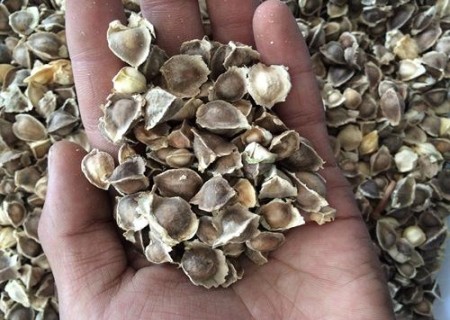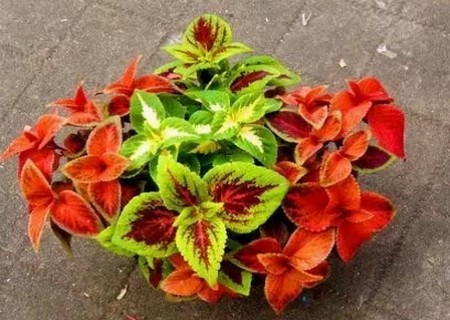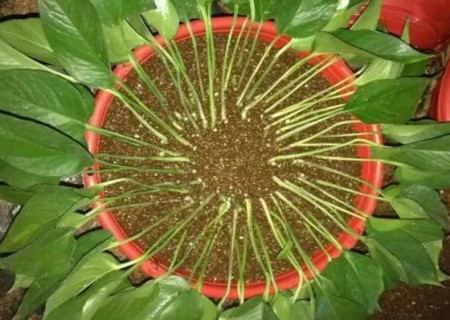How to plant colourful leaf grass seeds
Colorful leaf grass has bright colors, many varieties and easy reproduction. As a widely used foliage flower, it can be used not only as a display of small foliage flowers, but also as a pattern flower bed and as a leaf matching of flower baskets and bouquets.
Indoor furnishings are mostly small and medium-sized potted plants, choose a set of pots with light color and smooth texture to set off the gorgeous leaf color of colored leaf grass. In order to make the plant beautiful, the unopened inflorescences are often cut off and admired on the short table and windowsill. Courtyard cultivation can be used as a flower bed, or plant edge. Several pots of colored leaf grass can also be used to decorate the venue and the vestibule of the theatre with flowers.

How to plant colourful leaf grass seeds? Usually, sowing and propagation can maintain the good characters of varieties, and some of them should be propagated by cuttings if they can not be kept by sowing and propagation.
1. Applicable category
Sowing and propagation can maintain the excellent characters of the varieties, and this type is suitable for the following five leaf type varieties:
[large leaf type] with large oval leaves, tall plants, few branches, uneven leaves.
[color leaf type] the leaves are small, long oval, tip-pointed, smooth, with red, orange-red, yellow-green, white green spots and so on.
[wrinkled edge] the leaf margin is cracked and wrinkled, the cracks and ripples vary greatly, and there are many kinds of leaf colors.
[willow leaf type] leaves slender, willow-shaped, leaf margin irregularly lobed and serrate.
[yellow-green leaf type] the leaves are small, yellowish green, the plants are short and much branched.
Sowing is generally carried out in March, half-mixed with fully mature humus soil and plain sandy soil into the seedling basin, the seedling basin containing fine sand soil is soaked in water, and then soaked according to the sowing method of small seeds, slightly covered with thin soil, covered with glass plate or plastic film to keep the basin soil moist. The optimum temperature for germination was 25 ℃ to 30 ℃ and germinated in about 10 days. After emergence, the seedlings are divided into pots for 1 to 2 times. The seeded seedlings have different leaf colors, so you can choose the good and eliminate the bad at this time.
2. Seed preparation
The seed price of colourful leaf grass is high, so it can be collected by itself. The brightly colored plants were selected to leave seeds before flowering, and artificial pollination was carried out by using a brush dipped in pollen to brush the stigma before flowering, and then isolated by paper bags to prevent hybrid degradation. Some phosphorus and potassium fertilizer should be applied before flowering to ensure the nutritional needs of fruiting, the seeds are full and the germination rate is high.
Generally, after flowering and fertilization, as long as the sun is sufficient and there is no harm to diseases and insect pests, coloured leaf grass can bear seeds. After a month of seed setting, the seeds can be harvested, dried and preserved, and can be reserved for sowing in the coming year.
Because the seeds of colourful leaf grass are small, they can be dried with pods when harvested. The seeds harvested by oneself will have some degeneration and variation after sowing in the second year, so bad seedlings should be eliminated from the young seedling stage to ensure that the seedlings are neat and consistent.
3. Sowing and reproduction
Under the condition of high temperature greenhouse, the four seasons can be sown in pots, usually in March in the greenhouse.
Half of the fully mature humus soil and plain sandy soil were mixed into the seedling basin, and the seedling pot containing fine sandy soil was soaked in water, then soaked according to the sowing method of small seeds, slightly covered with thin soil and covered with glass plate or plastic film to keep the basin soil moist, water supply and pipe protection.
The optimum temperature for germination was 25 ℃ to 30 ℃ and germinated in about 10 days. After emergence, the seedlings are divided into pots for 1 to 2 times. The seeded seedlings have different leaf colors, so you can choose the good and eliminate the bad at this time.
It takes a lot of work to sow and propagate seeds, it takes a long time to sow and raise seedlings, and it is also laborious to put it on the pot. cutting propagation is widely used in production.
The sowing soil is a mixture of peat soil 1 and fine sand 1, and the seeds are bright seeds, so there is no need to cover the soil after sowing, the optimum temperature for germination is 20-25 ℃, keep the substrate moist and germinate for 8-10 days. Cutting can be carried out in four seasons, rooting in about 20 ℃ in a week, and water cutting is also easy to take root.
When the seeding seedlings grow a pair of true leaves, the basin soil is peat soil 2, loam 1, river sand 1, add enough base fertilizer, often topdressing during the growing period, including calcium superphosphate and bone powder. When the temperature is kept above 20 ℃, the seedling stage depends on the purpose of culture. If you want to cultivate plump plants, you should remove the trunk to promote the growth of lateral branches. If you want to cultivate a conical plant, you don't have to remove the trunk.
Time: 2019-06-09 Click:
- Prev

Cutting Propagation and Seedling raising techniques of Colored Leaf Grass
Colorful leaf grass is an excellent potted foliage flower, can also be used in summer and autumn flower beds, bright colors, very beautiful. At the same time, you can cut branches and leaves to do cut flowers, or the ingredients of flower baskets, and can also be planted in the same pot with duckweed, which is a good material for decorating the living room and study. Propagation of Colored Leaf Grass by Common cutting methods
- Next

Illustration of how to cut green pineapple
Everyone who loves flowers hopes that the home can be full of green, full of flowers, home green permanent pot of green pineapple is essential, how to keep green pineapple fresh, learning to cut green pineapple is essential, the following editor will teach you some tips on cutting. Around us, big pots and small ones.
Related
- Fuxing push coffee new agricultural production and marketing class: lack of small-scale processing plants
- Jujube rice field leisure farm deep ploughing Yilan for five years to create a space for organic food and play
- Nongyu Farm-A trial of organic papaya for brave women with advanced technology
- Four points for attention in the prevention and control of diseases and insect pests of edible fungi
- How to add nutrient solution to Edible Fungi
- Is there any good way to control edible fungus mites?
- Open Inoculation Technology of Edible Fungi
- Is there any clever way to use fertilizer for edible fungus in winter?
- What agents are used to kill the pathogens of edible fungi in the mushroom shed?
- Rapid drying of Edible Fungi

